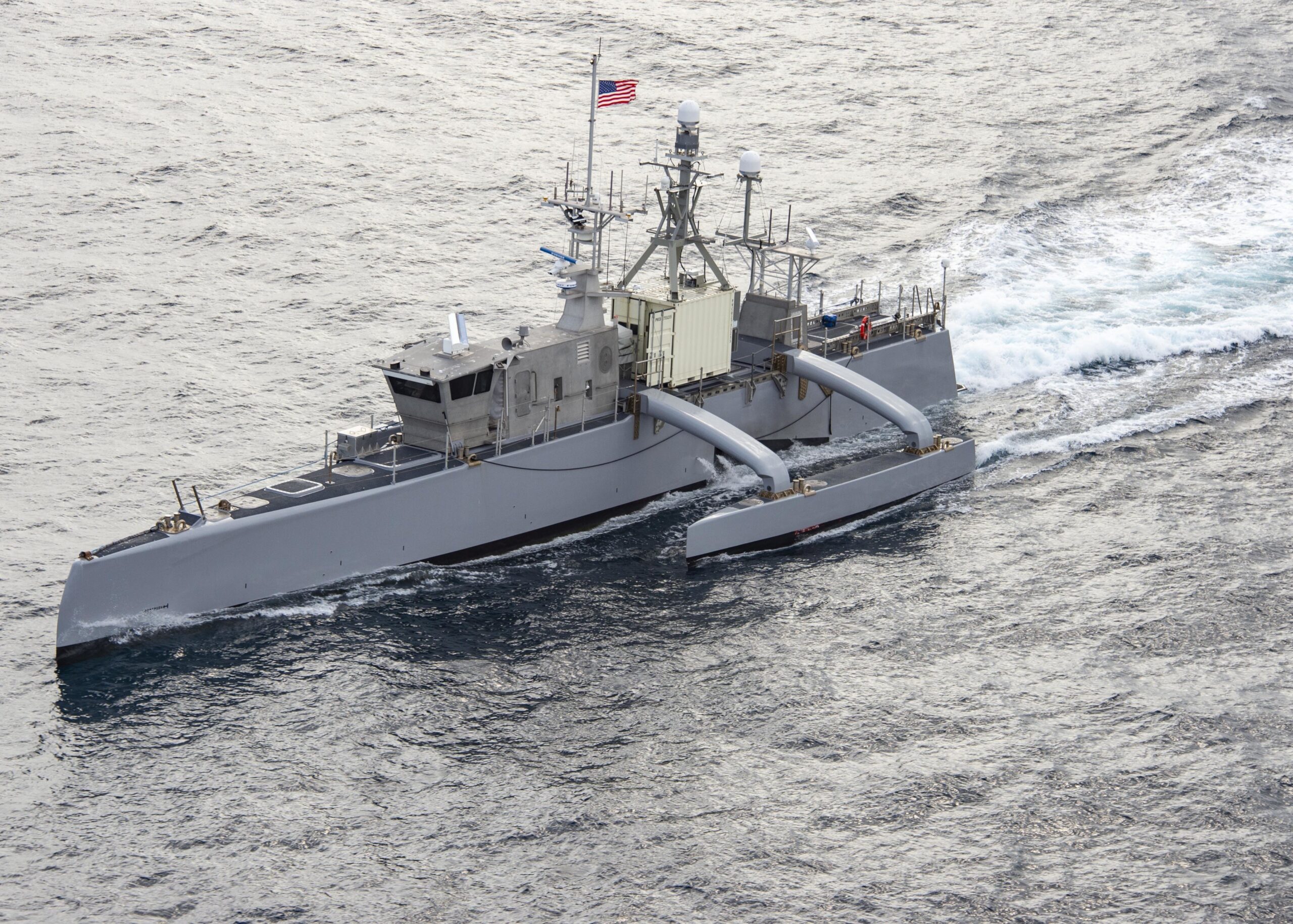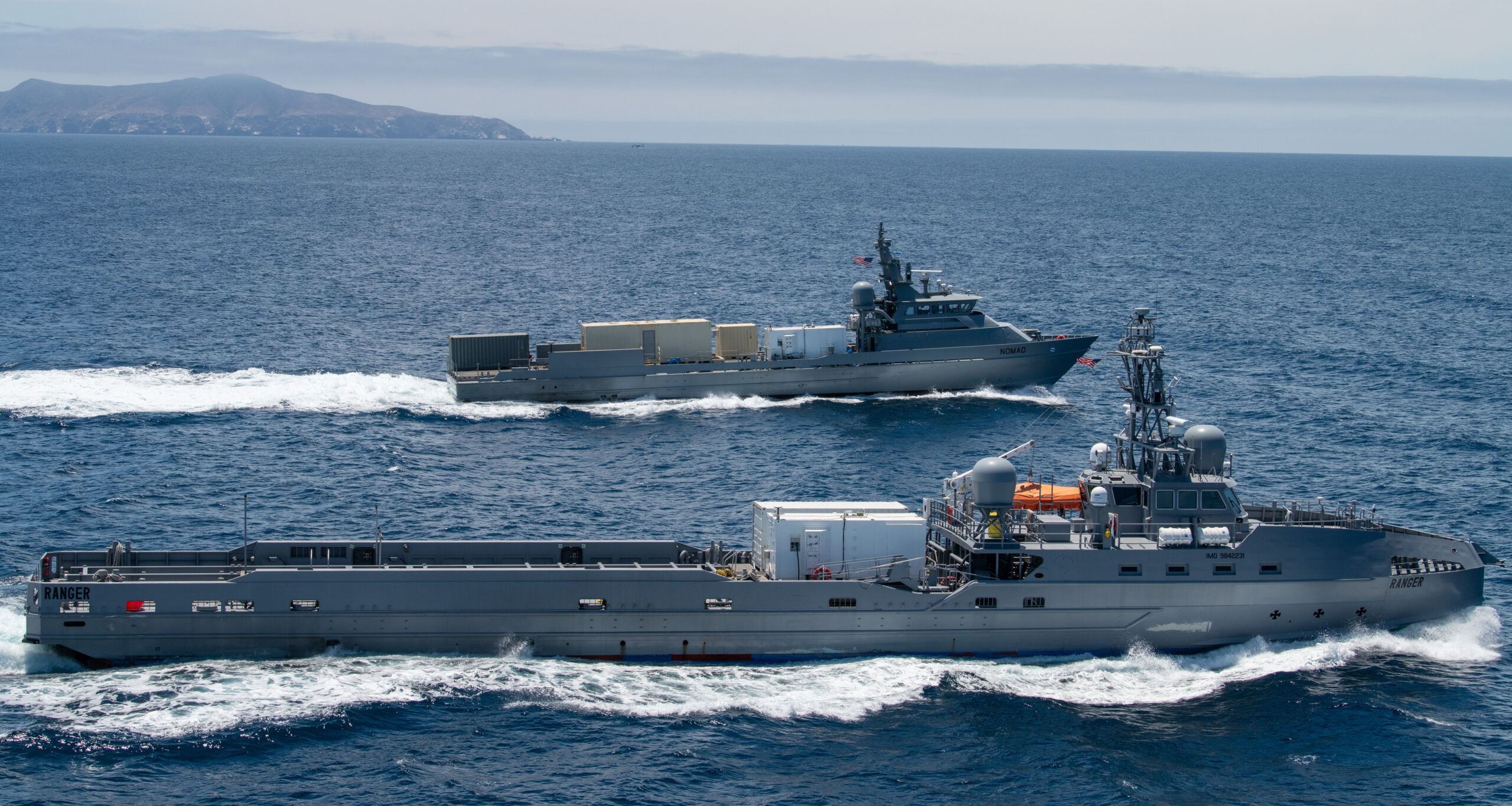The US Navy (USN) is fielding large and highly autonomous unmanned surface vehicles (USVs) for the first time at the latest edition of the multinational Rim of the Pacific (RIMPAC) exercise in and around the Hawaiian Islands and Southern California region from 29 June to 4 August.
RIMPAC 2022 will involve around 25,000 personnel drawn from across 26 countries. The exercise will also feature 38 surface vessels, four submarines, over 170 aircraft and ground-based assets drawn from nine national land forces.
The USN has deployed several large USV prototypes including USVs Nomad and Ranger – which are serving as testbeds for its Medium and Large Unmanned Surface Vessel (MUSV and LUSV) programmes of record – as well as Sea Hunter.
“Unmanned systems provide additional warfighting capability and capacity to augment the Navy’s traditional combatant force,” the service said via its official RIMPAC social media account.
The USVs are assigned to the newly-formed Unmanned Surface Vessel Division One (USVDIV One), which was stood up in May as a dedicated USV experimentation and fleet advocacy unit under the San Diego-based Surface Development Squadron One (SURFDEVRON One).
“To meet the challenges of the 21st Century, we must continue to innovate the surface force,” said USVDIV One commanding officer Commander Jeremiah Daley during the unit’s inauguration ceremony. “USVDIV One will accelerate the delivery of credible and reliable unmanned systems in conjunction with increasingly capable manned platforms into the fleet.”

“USVDIV One will be a catalyst for innovation as we employ unmanned surface capabilities in the Pacific Fleet,” said the USN pacific fleet’s Naval Surface Force commander, Vice Admiral Roy Kitchener, at the ceremony.
“The implementation of unmanned systems will increase decision speed and lethality to enhance our warfighting advantage,” Vice Adm Kitchener added.
USVs Nomad and Ranger are being used to demonstrate technologies that can help to accelerate the USN’s adoption of unmanned and autonomous systems under the US Department of Defense’s (DoD’s) Ghost Fleet Overlord Program. The USVs, which are based on converted commercial hull, feature bespoke perception and automated navigation systems, self-monitoring and damage control systems extended missions, and as well as a command control and communications architecture.
Meanwhile, Sea Hunter and sister vessel Sea Hawk were originally developed under the US Defense Advanced Research Projects Agency’s (DARPA’s) Anti-Submarine Warfare Continuous Trail Unmanned Vessel (ACTUV) programme. These have been extensively used to test a range of technologies, including those optimised for anti-submarine warfare (ASW) and surface ISR missions.
While the USN has not disclosed the specifics of the USVs’ role at RIMPAC 2022, it is likely that the sea vehicles will be used to scout ahead of the fleet and enhance the situational awareness of surface combatants.
by Jr Ng




















Discussion about this post